
Gear Metering Pumps & Meter Mix Dispense Machines with highest accuracy for processing liquids and pastes.
High-precision rotary stroke bearings for backlash-free linear and rotational movements for use in machine and device construction.


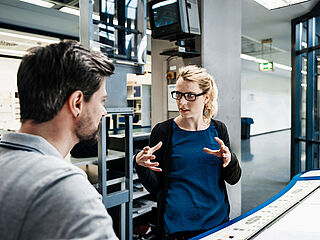



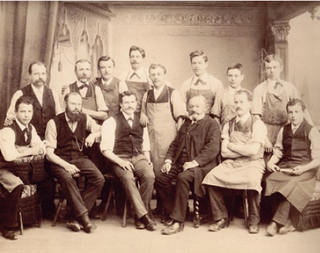














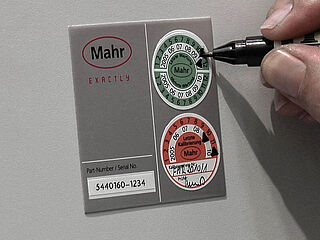

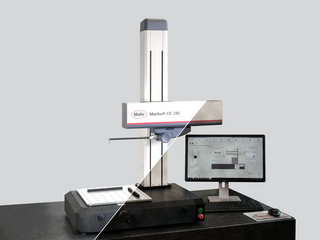
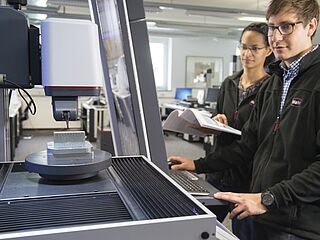


Mahrの革新的な測定工具:アナログモデルからワイヤレス伝送機能を内蔵したデジタルモデルまで、多様なノギス・マイクロメータ・ダイヤルインジケータ。Mahrの比較測定器と基準器は、製造における高精度の測定に不可欠です。
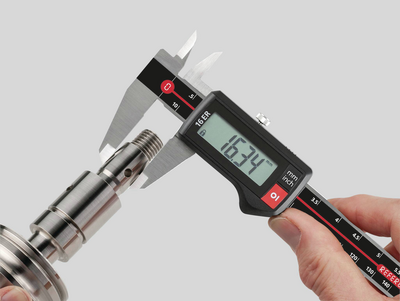
アナログからデジタルまで、ノギスの全領域を網羅。簡単な操作、ワイヤレス、高精度。製造現場での効率的な使用に最適です。
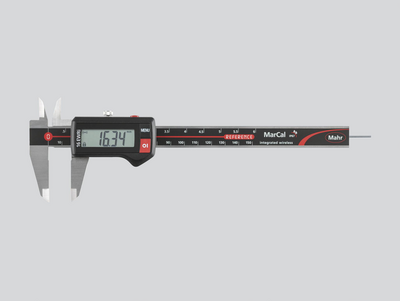
安心できる読み取やすいデジタル表示、モダンなデザイン、そしてMahrのいつもの正確さが特徴のデジタルキャリパー。製品レンジには、すべてのアプリケーションに対応するための計測器が揃っています。データ通信用の各種インタフェースとIP67までの保護等級により、満たさない要求はありません。
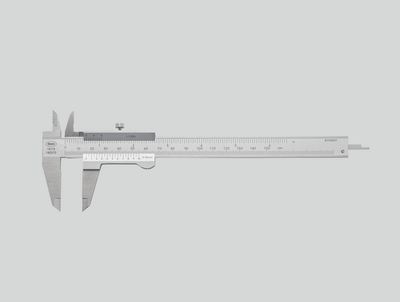
グレアのない読み取り、硬化鋼、盛り上がったガイドウェイがスケールを保護し、最高の精度をもたらします。Mahrの高品質キャリパーの機能にクラシックなアナログノギス/デプスゲージを装備。

大型でハイコントラストのダイヤルと耐衝撃測定ツールにより、精度が持続します。高速で安全な読み取りのために、試行錯誤を重ねた機械設計を採用。
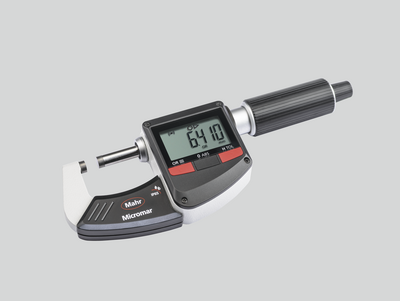
多彩な設計で最高の精度を実現。Mahrのマイクロメータには伝統的な機械式タイプ、デジタルタイプ、ワイヤレスタイプがあります。

クリアなデジタルディスプレイ、モダンなデザイン、いつものMahrの精度が、このデジタル外部マイクロメータを特徴づけています。製品レンジには、すべてのアプリケーションに対応するための計測器が揃っています。データ転送のための様々なインタフェースとIP65までの高い保護等級により、満たせない要求はありません。
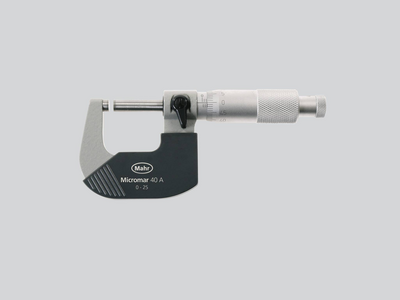
アンチグレア読み取り、断熱プレート、精密研磨されたスピンドルによる最高の精度。Mahrの高品質マイクロメータの機能。

連続する部品(シャフト、ボルト、シャンク)の信頼性の高い高速検査に特に適しています。寸法精度が高いことで知られており、ダイヤルコンパレータで一目で読み取れます。
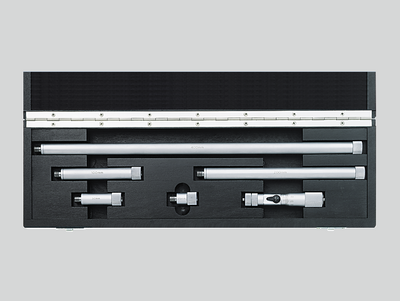
2,500mmまでの大口径の測定や距離の試験に適しています
目盛板またはデジタル表示、あるいはピストル型グリップを持ったクイック測定器として利用できます。Mahr3点式内側マイクロメータは、自動セルフセンタリングにより常に信頼性の高い測定結果を提供します。
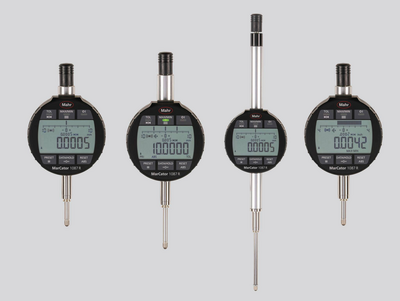
アナログからデジタルまでの、ダイヤルゲージ、ダイヤルコンパレータ、ダイヤルテストインジケータの全範囲。簡単な操作、ワイヤレス(オプション)、高精度。製造現場での効率的な使用に最適です。

クリアなデジタル表示、堅牢な構造、高いMahr精度を特徴とするデジタルダイヤルゲージです。製品レンジには、すべてのアプリケーションに対応するための計測器が揃っています。データ転送のための様々なインタフェースとIP54までの高い保護等級により、満たさない要求はありません。
高感度と高精度の理由:測定ツール軸のしっかりした取り付け、精密に噛み合わされたホイールとピニオン、精密に取り付けられた測定ピン。
Millimessダイヤルコンパレータは、アナログのダイヤルゲージと比較して、さらに精密な部品を使用しているため、測定精度が高く、ヒステリシス誤差が大幅に向上しています。これらの利点は、特に振れ試験、真直度や平坦度測定、比較測定において顕著に現れます。
高精度の誘導型Millimessダイヤルコンパレータは、0.2μmまでのデジタルインクリメントが可能です。公差モニタリング、動的測定の最小または最大記録、数値と目盛りの併用表示、簡単なデータ転送などのユーザーフレンドリーな操作機能により、精密測定に欠かせない高精度測定器です。
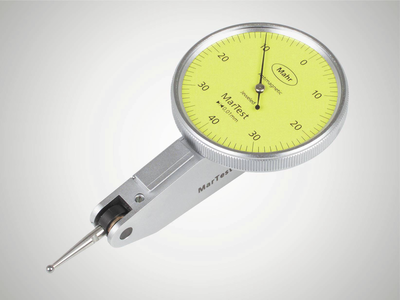
コンピュータに最適化された高感度の測定ツールにより、最高の信頼性と精度が保証されます。作業場でのラフな使用に備えて、ディスプレイは硬化ミネラルガラス板によって傷や破損から見事に保護されており、さらにシーリングが液体の浸透を確実に防ぎます。

The sensitive computer-optimised measuring tool ensures maximum reliability and precision. For rough workshop use, the display is superbly protected. A seal also provides reliable protection against penetrating liquids.
NC機械、マシニングセンタおよび放電加工機用のMahr 3D測定プローブは、セットアップとダウンタイムを短縮します。ワークピースやフィクスチャの基準エッジへの正確な接触に最適です。
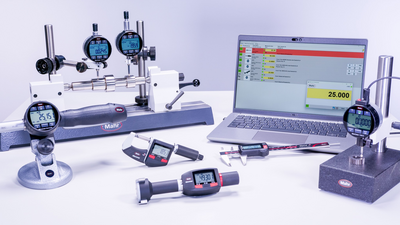
統合型ワイヤレス、外部ワイヤレスモジュール、USB、Opto RS232、またはDigimaticのいずれかによる:使用するインタフェース規格に関わらず、MarConnectは常に最適な接続を提供します。
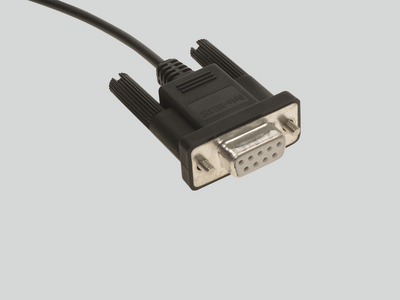
多くのMahr精密ゲージには、MarConnectインタフェースを装備したデータ出力があります。使用するインタフェース規格(USB、Opto RS232、またはDigimatic)に関わらず、MarConnectは常に最適な接続を提供します。
Mahrのワイヤレス製品レンジは、完全な移動性とともに正確な測定結果を保証します。最新の簡単な測定方法 – 有線技術の制約なし。
MarStandの測定用三脚、測定台、ラジアル振れゲージは、高精度な測定結果の基礎となる高い安定性を提供します。また、ダイヤルインジケーター、ダイヤルコンパレータ、ダイヤルテストインジケータ測定器や測定プローブに必要なサポートを提供します。
測定用三脚は、安定したデザインにより、正確な測定結果の基礎を提供します。また、ダイヤルインジケーター、ダイヤルコンパレータ、ダイヤルテストインジケータ測定器や測定プローブに必要なサポートを提供します。
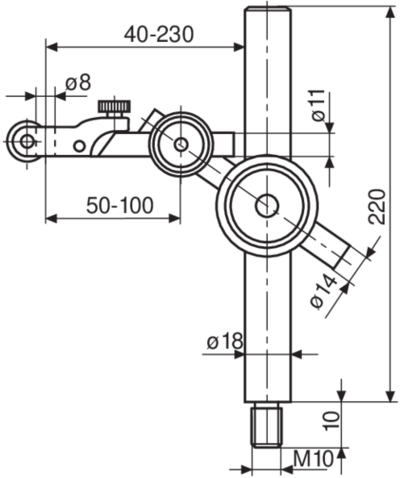
MarStandのポストとサポートアセンブリは、個々のソリューションに使用されており、正確な測定結果の基礎となる高い安定性を提供しています。また、ダイヤルインジケーター、指針測微器(コンパレータ)、ダイヤルテストインジケーター測定装置と測定プローブのために必要なサポートを提供します。
測定テーブルは、精密で水平なテーブル、安定した測定コラム、強いアーム部品を組み合わせたものです。MarStandの測定テーブルは、極めて安定したデザインにより、正確な測定結果の基礎を提供します。

半径方向振れゲージは、生産現場に近い環境でシャフトの位置および形状誤差を検出する最も簡単な方法です。堅牢なMarStand半径方向振れゲージは、豊富なモデルにより、幅広いワークピース要件と正確な測定結果の基礎を形成します。
硬質御影石製のテストプレートは、高い強度と寸法の安定性により、高さ測定器の表面として最適です。

指示ゲージを比較ゲージとして使用すれば、製造現場での正確な測定に最適なツールとなります。ゲージを基準器としてセットすることにより、偏差マージンを減らし、温度変化による測定結果への影響を最小限に抑えることができます。

指示スナップゲージはシャフト・ボルト・シャンクなどの円筒形状部品の精密測定に最適な測定ツールで、特に連続して製造された部品を安全かつ迅速にテストするのに適しています。寸法精度はダイヤルコンパレータで指示され一目で読み取ることができます。
内径測定器は、穴の直径、真円度、円錐度を正確に測定するのに最適なツールです。
当社の隙間ゲージは、各種フィルム、シート、プレートを特に高速に測定するための堅牢でシンプルな製品レンジを提供します。
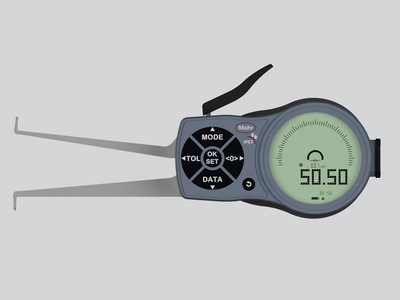
キャリパーや内径マイクロメータネジなどの一般的な測定器がワークの形状が原因で使用できない場合に、キャリパーゲージは完璧なソリューションになります。
当社のデプスゲージは、特に高速な深さ測定のために堅牢でシンプルな製品レンジを提供しています。8mm取り付けシャフトにより、測定タスクに応じてダイヤルゲージ、ダイヤルコンパレータ、およびプローブを使用できます。
ユニバーサル計測器は、基準器との比較測定により、温度変動が測定結果に与える影響を最小限に抑えることができるため、生産現場での精密測定に最適なパートナーとなります。
ギヤ、ねじ、テーパー、くぼみのいずれであっても:Multimar万能測定器は、標準的な測定器では適さない、ほとんどすべての内部および外部測定に最適的なソリューションです。ベーシックユニットの選択が可能で、幅広いアクセサリーをご利用いただけます。
内側および外側測定器を正確に調整。844 Sセッティング機器を使用すれば、大きな寸法の場合でも、すべての測定タスクに完全に対応できます。
肩、狭いカラー、くぼみのいずれのセンタリングでも:Multimar 36Bユニバーサル測定器は、ほとんどすべての内径および外径測定に理想的なソリューションです。ベーシックユニットの選択が可能で、幅広いアクセサリーをご利用いただけます。
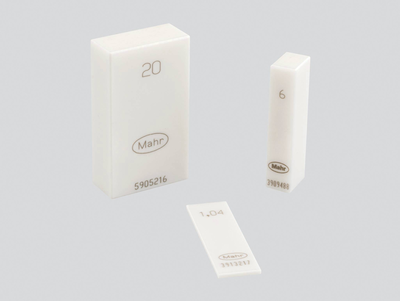
信頼のMahrセッティング基準片とゲージ - 正確な測定結果の基礎となるため。
信頼のMahrセッティング標準片 - 正確な測定結果の基礎となるため。
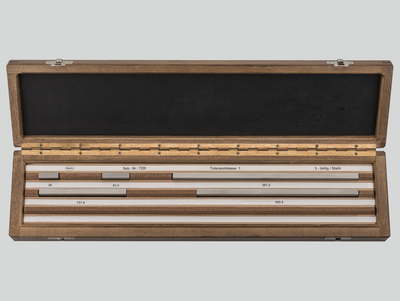
Mahrゲージブロックでは、高品質のリファレンス用と作業用の標準器を自由に使用できます。4つの公差等級と2つの素材から、作業場、生産、品質保証の要件に合わせて選ぶことができます。
Mahrのピンゲージは、3つの公差クラスと様々な設計のものをご用意しています。作業場、生産、品質保証の要件に合わせて選ぶことができます。
電気式測長器の要件は、その用途と同じくらいさまざまです。優れた信頼性、精度、そして簡単な操作が求められます。
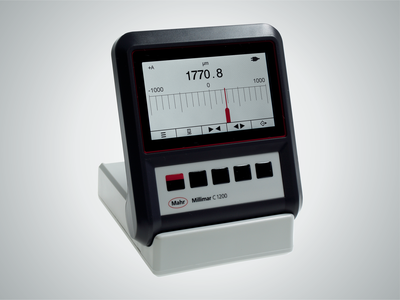
電気式測長器の要件は、その用途と同じくらいさまざまです。優れた信頼性、精度、そして簡単な操作が求められます。Millimarコンパクトなコラム測定器はこれらの要件を満たしています。

Millimar長さ測定器は、コンパクトで堅牢、そして使いやすい測定器です。生産現場や測定室での複雑な測定作業を可能にする、汎用性の高い評価・指示装置です。

モジュールとソフトウェアの多様な組み合わせの選択肢により、これまで以上に作業環境やツールを個別に設計する機会が得られます。
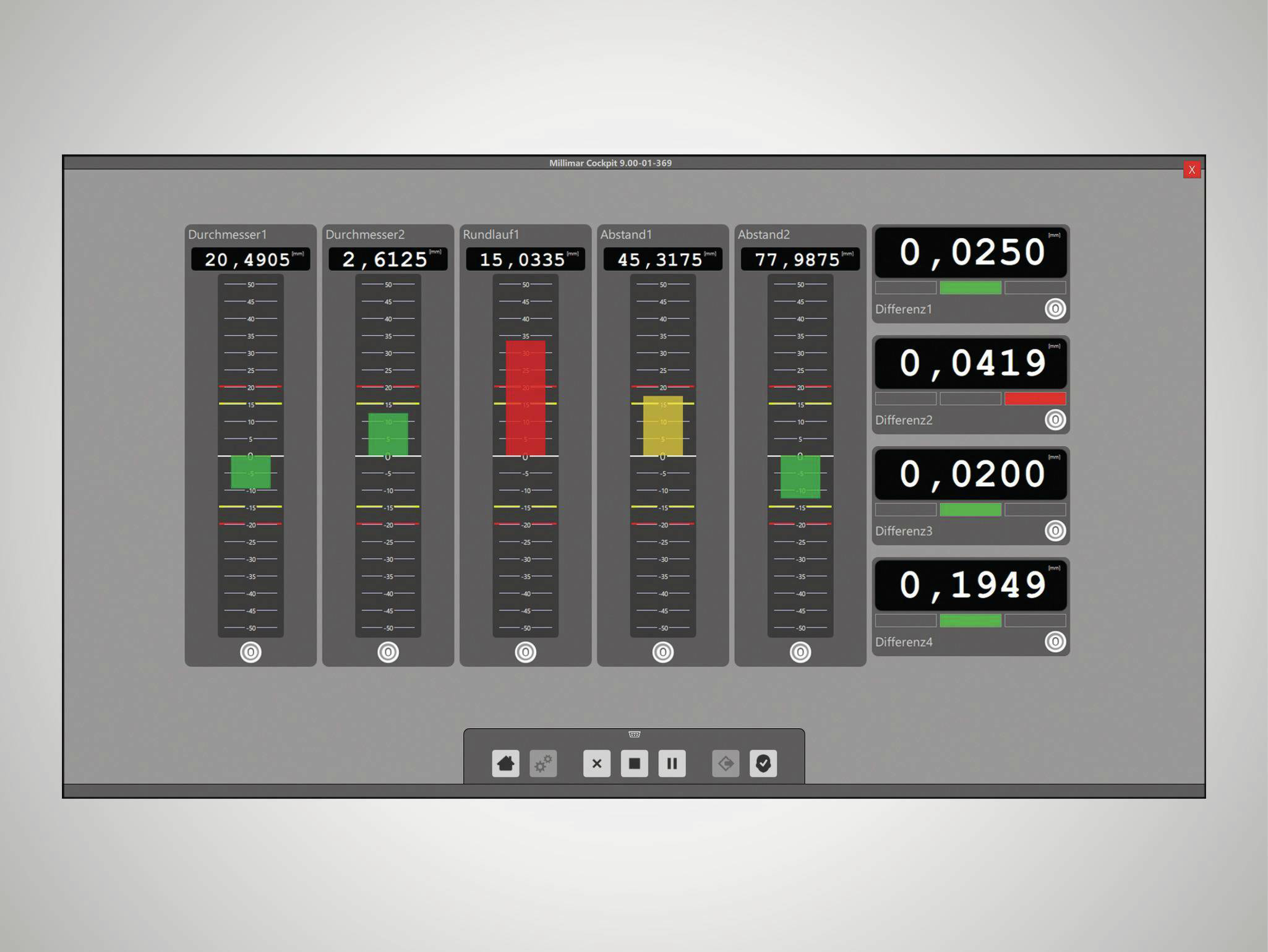
Smart and universally applicable software for complex measurement tasks in the manufacturing sector
Millimar トランスデューサーは、計測チェーンにおいて最も重要なコンポーネントです。その特性で測定全体の品質が決まります。用途に応じて、さまざまな技術をご利用いただけます。例えば、Millimarの誘導測定プローブなど。これらの製品は、頑丈で用途が広く説得力のある価格です。
厚さ測定、半径方向の振れ、同心度のどれであっても:誘導プローブにより、形状、サポート、または半径方向の振れの偏差に関係なく、測定値と偏差を記録できます。大きな利点は、直線性の範囲が広く、干渉の影響を比較的受けにくいことです。プローブは主に生産現場での比較測定に使用されますが、センサーの具体的なタスクは様々です。
空気圧長さ測定器は、高精度と長期的な安定性が特徴です。測定ノズルによる非接触測定は、ワークに損傷を与えません。未洗浄の、油や潤滑剤が付着した、またはラップでコーティングされたワークでも
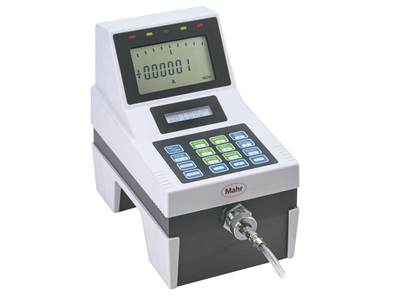
Millimar長さ測定器は、コンパクトで堅牢、そして使いやすい。生産エリアでの測定タスクの複雑さを管理できる用途が広い表示・評価装置です。
測定結果は101個の3色LEDで表示され、離れた場所からでも簡単に読み取ることができます。プログラム可能な警告および許容限度を超えると、セグメントの色が緑から黄色または赤に変わります。
Millimar空気圧式測定器は寸法の偏差を迅速かつ正確に記録します。これは、産業の生産現場や測定室で長年にわたり能力を発揮しています。
外出先での測定と評価に。
空気圧測定リングを使用した非接触測定により、ワークへのダメージがない。
エア測定技術のアクセサリーを使用して、測定ステーションを測定タスクに適合させます。
信頼のMahrセッティング標準片 - 正確な測定結果の基礎となるため
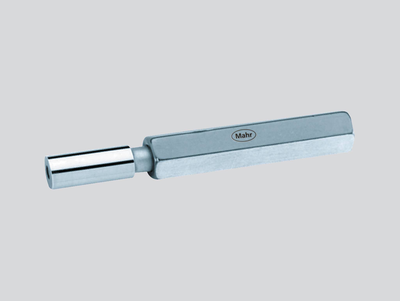
空気圧式測定器(ノズルリングゲージ)の設定 焼入れ、エージング、研磨、ラップを入念に実施。
空気圧測定器(ノズルプラグゲージ)の設定 焼入れ、エージング、研磨、ラップを入念に実施。
測定に高い目標を設定したいですか?Digimarがそれに応えます!

作業現場でのワークのスクライビングやマーキングに。高さや距離の測定が簡単に。
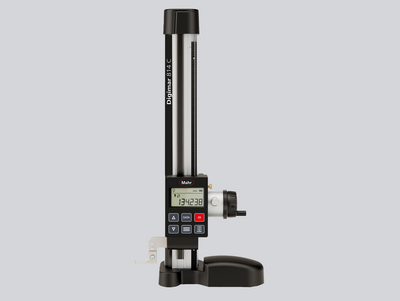
Practical measurement modes and options: The Digimar 814 C makes typical measurement tasks easy
Touch operation, ergonomic handling and a wide range of evaluation options: This is what the Digimar 816 CLT height measuring device stands for.
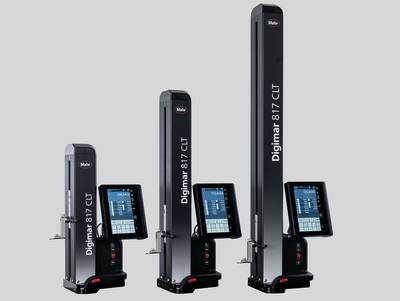
タッチ操作、人間工学に基づく操作性、幅広い評価オプション:これが、Digimar 817 CLT高さ測定機の特長です。

タッチ操作、人間工学に基づく操作性、幅広い評価オプション:これが、Digimar 817 CLT高さ測定機の特長です。
精密長さ計測は、絶対測定と相対測定の両方を対象とした高精度の寸法計測を代表します。

作業現場向けの万能で使いやすい長さ測定および設定装置
作業現場向けの万能で使いやすい長さ測定および設定装置
シンプルなゲージブロックテストスタンド、全自動ダイヤルゲージテストスタンド、ULMデバイスから、超精密で部分的に自動化されたCiMユニバーサル測定機まで、幅広い製品範囲により、Mahrは常に、生産、測定室、および 校正ラボに実用的なソリューションを提供しています。つまり、効率性の高い測定プロセスにより最大限の精度を実現します。
クラシックなULMでも、電動のPLMやCiMの機器でも。Mahr汎用長さ測定機は、ユーザーフレンドリーで高速、かつ信頼性の高い測定を、最小限の不確かさで実現します。
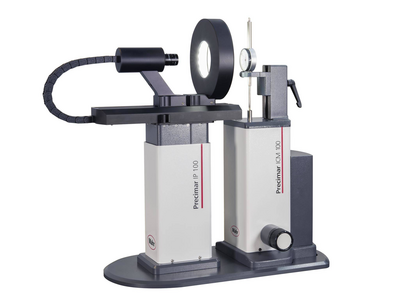
ダイヤルインジケータ、ダイヤルテストインジケータ測定装置、ダイヤルコンパレータ、およびプローブの半自動および全自動試験 - 効率的で正確。
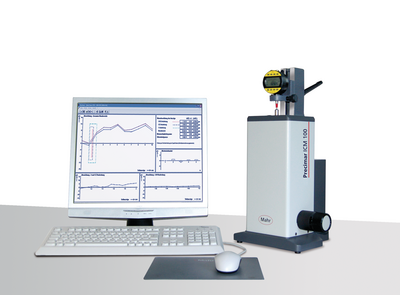
ダイヤルインジケータ、ダイヤルテストインジケータ測定装置、ダイヤルコンパレータ、およびプローブの半自動および全自動試験 - 効率的で正確。
ダイヤルゲージ・テストインジケータ・コンパレータの手動テスト - 簡単で正確
信頼のMahrゲージブロックコンパレータ - 標準片の正確な試験の基礎となるため
顕微鏡は、距離、半径、角度を素早く検査するために、ほとんどすべての産業で使用されています。ラボや生産現場の近くで。
顕微鏡は、距離、半径、角度を素早く検査するために、ほとんどすべての産業で使用されています。ラボや生産現場の近くで。
産業用および研究用の表面計測
公差の厳しい構造化された機能表面には、ワークや対象物の形状を短時間で記録する高精度な測定システムが必要です。
輪郭計測技術により、大まかな形状のズレを把握することができます。
光学式測定器による正確な輪郭測定
輪郭測定と粗さ測定の組み合わせ:プロフェッショナルオールラウンダー
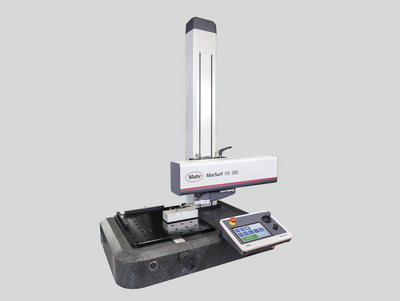
輪郭測定と粗さ測定の組み合わせ:プロフェッショナルオールラウンダー
ISO 25178 / ISO 4287に準拠した2D/3D輪郭測定および粗さ測定
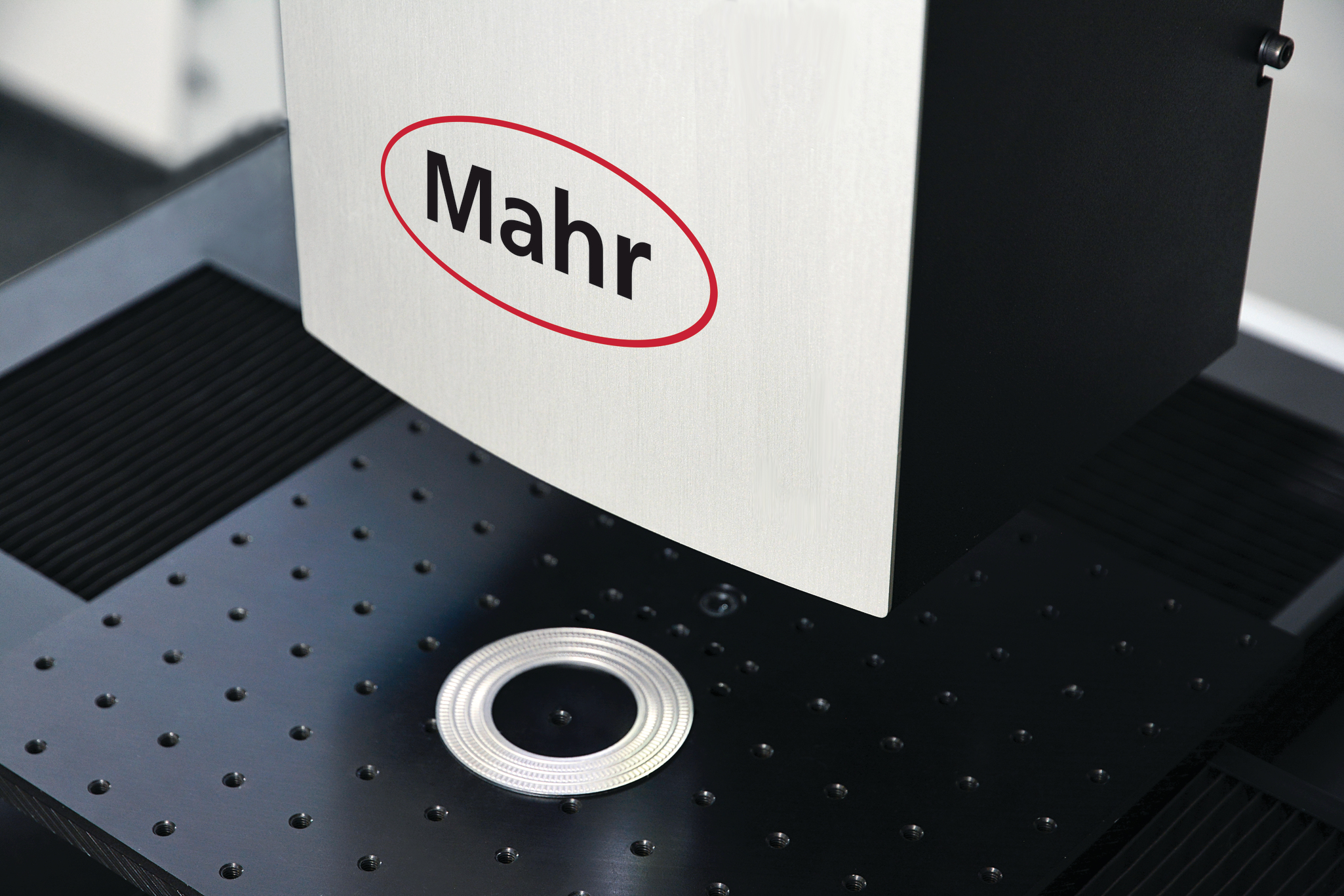
産業用および研究用の3D表面計測
モバイル測定器でどこでも測定!
高精度レンズ用測定ステーション
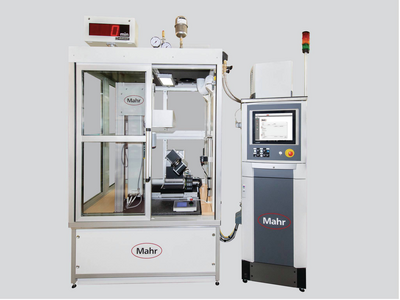
標準的なソリューションではもう十分ではないとき。個別カスタマイズソリューション
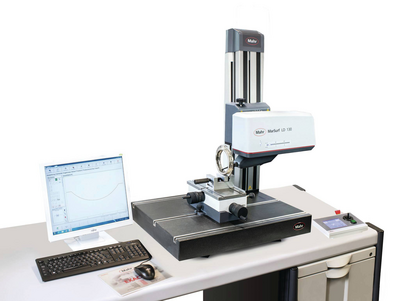
公差の厳しい構造化された機能表面には、ワークや対象物の形状を短時間で記録する高精度な測定システムが必要です。
測定室やラボでの汎用性とパワフルな性能
輪郭測定と粗さ測定の組み合わせ:プロフェッショナルオールラウンダー

輪郭と粗さ測定用触覚測定ステーション
2D/3D 輪郭および粗さ測定、ISO 25178 / ISO 4287 準拠
産業用および研究用の3D表面計測
モバイル測定器でどこでも測定!
モバイル3D表面測定
製造現場での使用
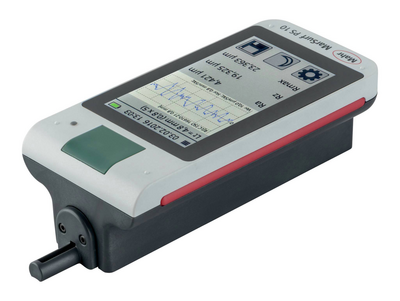
モバイル測定器なら、測定結果が必要なまさにその場所を測定できます。
超高精度レンズ用測定ステーション

標準的なソリューションではもう十分ではないとき。個別カスタマイズソリューション
Metrology
Experience outstanding features combined with extreme flexibility in workpiece size and increase your productivity in the production environment.

Flexible measurement of workpieces that can be clamped between centers
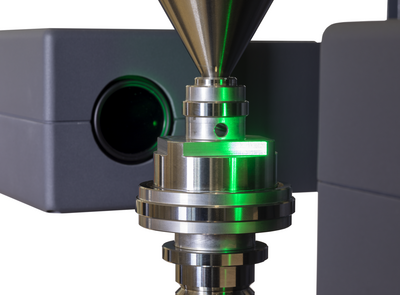
High resolution and very fast matrix camera for measuring a large number of features on rotationally symmetrical workpieces.
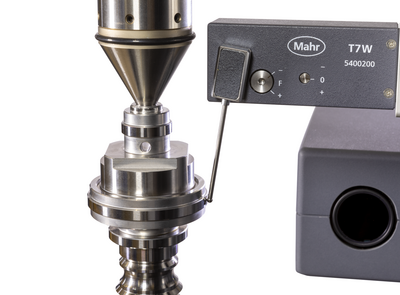
Fast optical matrix camera in combination with high-precision touch probes for measuring a large number of features on rotationally symmetrical workpieces.
Flexible clamping options and high-precision alignment using a fully automatic centering and tilting table

High resolution and very fast optical matrix camera for measuring a wide range of rotationally symmetrical workpieces. Addition of a fully automatic centering and tilting table for extremely fast, mechanical alignment and flexible clamping options.

Fast optical matrix camera in combination with high-precision touch probes for measuring a large number of features on rotationally symmetrical workpieces. Addition of a fully automatic centering and tilting table for extremely fast, mechanical alignment, flexible clamping options and, for example, internal measurements.
真円度、平面度、真直度、同軸度など、形状や位置の公差を検査するシステム、およびその他の測定タスク。手動から全自動まで。

この装置は、真円度、真直度、同心度などの特徴を、簡単に、コスト効率良く、しかも高精度に測定します。 当社の手動形状測定器は、測定室と生産現場近くでの測定の両方に適しています。
当社の自動形状測定システムは、最高レベルの自動化、柔軟性、精度を備えた安定した革新的な装置により、検査コストを押し上げることなく、プロセスコストを削減します。
metrology
Experience outstanding features combined with extreme flexibility in workpiece size and increase your productivity in the production environment.
Flexible measurement of workpieces that can be clamped between centers
Flexible clamping options and high-precision alignment using a fully automatic centering and tilting table
過酷な製造環境で 使用 される光学式および触覚式シャフト測定システム。 一般的な回転対称のワークの完全測定が可能です。
過酷な作業場環境で使用するための、ユニバーサルで完全自動の堅牢な光学シャフト測定機です。
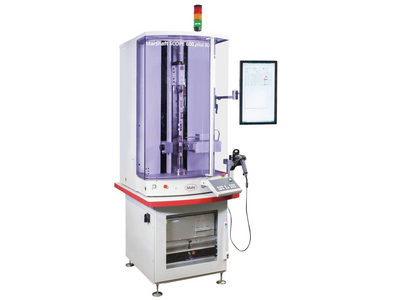
過酷な製造環境で 使用 される光学式および触覚式シャフト測定システム。 一般的な回転対称のワークの完全測定が可能です。
Metrology
Experience outstanding features combined with extreme flexibility in workpiece size and increase your productivity in the production environment.
Flexible measurement of workpieces that can be clamped between centers
Flexible clamping options and high-precision alignment using a fully automatic centering and tilting table
表面や形状を高速かつ非接触で記録するための幅広い技術や製品。
顕微鏡は、距離、半径、角度を素早く検査するために、ほとんどすべての産業で使用されています。ラボや生産現場の近くで。

粗さ、輪郭および他の多くの表面パラメータの決定。
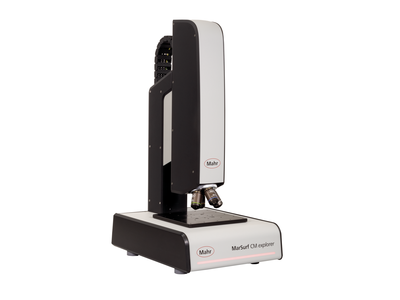
産業用および研究用の表面計測
ナノメートル精度の微小な粗さ
地形表面と形状の光学的解析
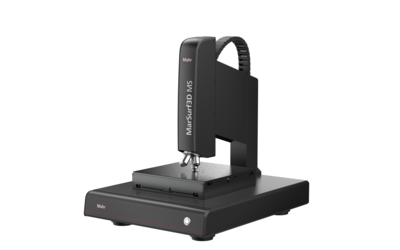
Surface metrology for industry and research
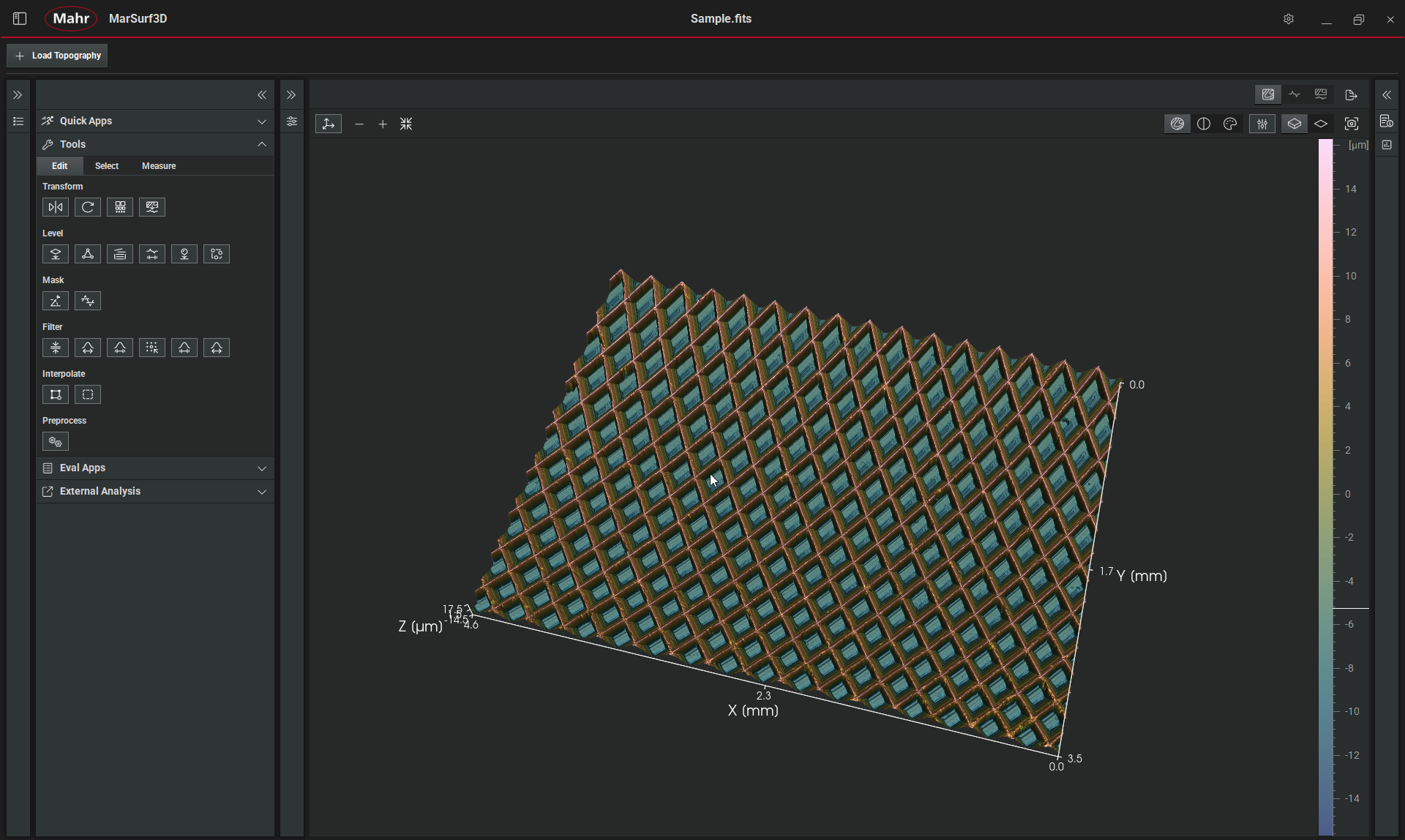
Surface metrology for industry and research
定評あるMahrの品質で再生されたシステム
Improved standards for surface texture

When you put a sheet of paper in the printer, you don't think twice about it: The paper size fits the printer, the printer fits the paper. This is no coincidence, but the result of a standard. According to the German Institute for Standardization e. V. (DIN), around 34,000 standards currently make up the German body of standards. They provide manufacturers and consumers with important rules, set standards for products and processes, and create clear criteria – often even worldwide.
The three parts of the new body of standards DIN EN ISO 21920 are an important building block in the international standards concept of Geometric Product Specification (GPS system), which has been developed for almost 25 years. Following on from the already published standards for surface finish specification, the DIN EN ISO 25178 series of standards, DIN EN ISO 21920 also provides an updated version of the relevant profile standards. The previous profile standards
- ISO 4287:1997-04 "Parameters"
- ISO 4288:1996-08 "Measurement conditions"
- ISO 13565-1 to 3 "Load-bearing component"
- ISO 1302:2002-02 "Drawing entries"
are being withdrawn. "They no longer cover all the possibilities of modern measuring instruments – for example, because they did not offer standardized procedures for optical measuring instruments to date. In addition, they did not always correspond to current industrial practice and in some cases had fuzziness in the definition of some parameter algorithms," explains Heinz-Joachim Kedziora, Head of Surface Metrology Development at Mahr. He is also the project manager responsible for the third part of the new standard internationally and has also taken on this task for the first part of the standard in the summer of 2021. "DIN EN ISO 12085 ("Motif") will remain; the revision of DIN EN ISO 3274 ("Stylus") has been started in the meantime."
Update and optimization
For historical reasons, some of the previous standards had quite different numbers. They ranged from "ISO 3274:1996-12 Measuring instruments" to "ISO 4287:1997-04 Parameters" and "ISO 4288:1996-08 Measurement conditions" – just to name a few. From now on, they will be summarized in the new DIN ISO 21920. It thus maps the entire process – from design to production to quality control 0 in three parts. Thus, the first part (ISO 21920-1) deals with manufacturing and specification, i.e. "drawing entries". Part 2 (ISO 21920-2) defines the parameters, and Part 3 (ISO 21920-3) formulates the conditions for checking these parameters at the end.
Part 1: Drawing ensures functions of the component
Part 1 replaces the previous ISO 1302 and covers the processes surrounding the drawing entries that a designer specifies for the manufacture of a component. The most important change: from now on, only the drawing is the basis for the conditions used to check a manufactured component. "Even if a designer develops something particularly complicated, Part 1 defines how he must specify the part without adding free text. In this way, it is possible that the specification alone ensures the function of the component," explains Heinz-Joachim Kedziora. Example: So if you only specify the parameter "Ra" and a value, then in many cases it is not ensured that this specification correlates with the functional behavior of the part. Here, there are more complex and less complex parameters. In addition, Part 1 includes new terms for the surface parameters:
| Term | Abbreviation | Explanation |
| Evaluation length | le | "evaluation length", the part of the sensing distance that is evaluated; replaces lmor ln. |
| Nesting index | Nic, Nis | "cutoff wavelength" only useful for linear filters; replaces λc and λs. |
| Profile S filter | Profile-S filter removes short wavelength components (low pass); for roughness parameters, the Nis filter("λs filter") removes very short wavelength components that do not belong to the R profile. For ripple parameters, theNic filter("λc-filter") removes short-wave components that belong to the R-profile and not to the W-profile. | |
| Profile L filter | Profile L filter removes long-wave components (high-pass); for roughness parameters, theNic filter("λc filter") removes long-wave components that do not belong to the R profile. | |
| Section length | lsc | "section length" for the parameters calculated from profile sections, e.g. Rz, Rp, Rv; replaces the term "single measurement section". |
| Number of sections | nsc | "number of sections"; replaces the term "number of individual measured sections |
Important for all users: The new standard applies only to new drawings. Older dated drawings retain their validity under the previous standard.
Also new are some symbols introduced to establish the clear reference of a drawing according to DIN EN ISO 21920-1:
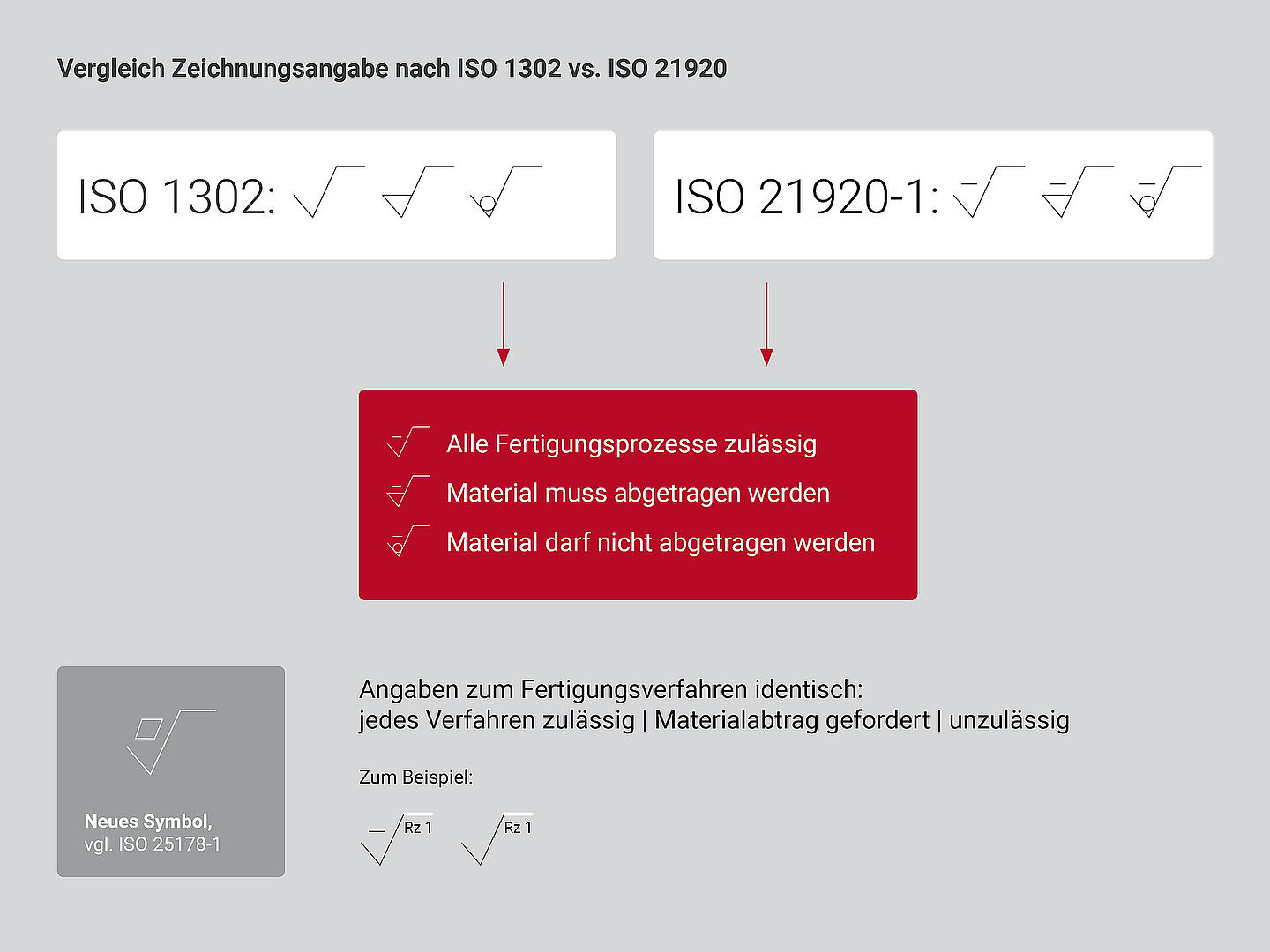
Part 2: Designers are in demand
The second part of the new ISO 21920 deals with the relationship between parameters and functions of components. It is the most comprehensive and probably most difficult part and replaces the former ISO 4287. "More than 100 parameters are described here, offering designers an enormous toolbox. In the future, they will be asked to select the right parameter from this part. Experience has shown that many users find the selection difficult, as this topic is not a training focus," says the development manager.
In the case of the parameters calculated from profile elements (= a mountain and a valley in the profile), there were previously greater measurement uncertainties because the profile elements were described but not clearly defined in detail, especially in borderline cases. This has now been significantly improved. However, metrology manufacturers are not forced to program all these parameters into a device or software, since some of them only play a role regionally.
Part 3: How to arrive at a valid result
Part 3 defines the conditions according to or under which measurements are made. It replaces the previous ISO 4288 and deals with the subject of "Specification and Verification" – i.e. requirements for measurement procedures and their correct implementation. Part 3thus defines the default case. This means that if no explicit specifications are made in the drawing, what is in the standard applies – in other words, everything that does not have to be explicitly specified.
"So this part is not only about the measurement conditions, but also about additional factors to be taken into account, how to get a valid result. Therefore, there are no prescriptions in this part on how to measure something, but only the description of a complete specification operator," Kedziora explains. The specification is theoretically ideal and unambiguous. According to ISO 8015, "The verification operator is the physical implementation of the specification operator. It can have exactly the same operations in the same order (in which case the procedural uncertainty is zero) or it can have different operations or perform the operations in a different order (in which case the procedural uncertainty is not zero)."
For verifcation, therefore, one simply specifies the uncertainty, which is not easy in practice for the most part. As an example, consider the use of the Gaussian filter: If in the standard case the specification assumes a profile point spacing of 0.5 µm, it is not forbidden to use a larger or smaller point spacing during verification; the user must then take this into account when estimating the measurement uncertainty.
Conclusion: Expanded possibilities for function descriptions
For most users, the new standard changes nothing at all. It only offers extended possibilities for functional descriptions, for example in additive manufacturing processes, where new structures or new filters are sometimes required.
Unlike in the past, it is no longer the workpiece that determines the filter setting, but the associated drawing. This increases the reliability of the decision as to whether the tested surface meets the requirements or not. There is no longer any need for the time-consuming – and in practice hardly observed –procedure according to DIN EN ISO 4288 for inspecting a workpiece surface, including the subjective assessment of whether a profile is periodic or aperiodic.
Overall, great emphasis was placed on continuity in the new standard. "The bottom line is that the weak points of the old standard – such as imprecise and non-practical definitions – have been eliminated. Where the old standard delivered reasonable results, this also applies to the new standard. Where the old standard was fuzzy, the new standard is sharper," summarizes development manager Kedziora. "Due to the continuity by which the new profile standard retains everything that has proven itself in industrial practice, users can continue to measure in accordance with the standard even with their existing measuring devices."
Currently, the German Institute for Standardization e. V. (DIN) is drafting the national standards DIN EN ISO 21920-1, -2 and -3. It is strongly recommended that the editions DIN EN ISO 21920-1, -2 and -3, which were published as early drafts as early as 2020, be withdrawn from circulation, as there were still changes in the international discussion leading up to the final version of the series of standards.

Tip:
Mahr is devoting a comprehensive webinar to the new ISO 21920 under the name "New Surface Standard". What the new standard has in store for metrologists and users is explained clearly and in detail. > View seminar
The changes at a glance:
- A few new terms
- New symbol for the specification
- The default tolerance acceptance rule is the maximum value rule ("max. rule").
- The rule values are based on the specification (drawing entry) and not on estimated values of the specified parameter. As a result, the assignment of nesting index is somewhat shifted depending on the specified Ra or Rz value.
- If nothing else is specified, verification is performed at the location of the specified geometry element where the maximum values are expected; imperfections such as scratches or pores must be included.
- No distinction between periodic and aperiodic profiles
- Parameters are (with a few exceptions) defined by the evaluation section.
- Only a few parameters, e.g. Rz, Rp, Rv are defined via profile sections (the term "sampling length" or "single measuring section" is no longer used).
- The specification of the tolerance limit follows immediately after the parameter designation.
- Simplified notation for the specification of bilateral tolerance limits
- A third tolerance acceptance rule: "Tmed": The median value of all measured values must lie within the specified tolerance limits.
- The specification of optical methods for profile acquisition is possible, e.g. EP OR(1).
